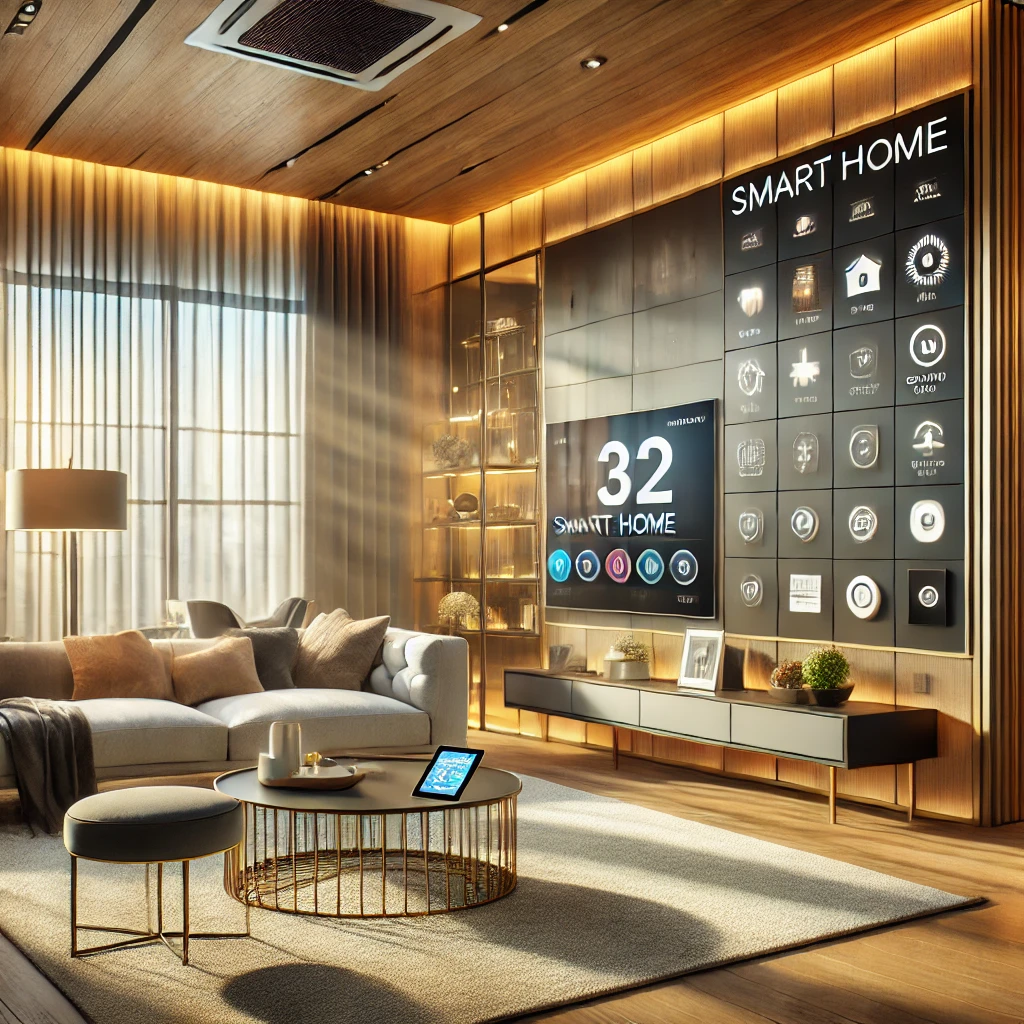What Is a Smart Home? A Beginner’s Guide to
Smart Home Technology
by Smart Blog
The concept of a smart home has evolved from science fiction into a practical and popular lifestyle choice. As technology advances, more homeowners are upgrading their living spaces with smart home devices that offer increased convenience, efficiency, and safety. Smart Blog will show you in this article important information to live in this technology time.
But what is a smart home, exactly? In this article, we’ll explore the definition of a smart home, how smart home technology works, and the benefits of integrating it into your daily life.

What Is a Smart Home?
A smart home is a residence equipped with internet-connected devices that allow remote control and automation of household systems. These include lighting, heating, security, appliances, and more. Smart homes can be managed via smartphone apps, voice assistants, or centralized hubs, offering seamless control and real-time information.
With smart home technology, everyday tasks become easier. You can adjust your thermostat from your phone, turn lights on with your voice, or check your doorbell camera while you’re at work—all with just a few taps or commands.
Key Features of Smart Home Systems
1. Smart Lighting
Smart lighting systems allow you to control brightness, color, and scheduling from your phone or a voice command. Popular brands like Philips Hue or LIFX let you automate lights for energy savings and ambiance.
2. Smart Thermostats
Devices like the Nest Thermostat or Ecobee learn your routines and optimize energy usage, reducing heating and cooling costs while keeping your home comfortable.
3. Smart Security Devices
Smart home security includes video doorbells, smart locks, cameras, and motion sensors. These provide real-time monitoring, instant alerts, and remote access to keep your home safe.
4. Voice Assistants
Voice assistants like Amazon Alexa, Google Assistant, or Apple Siri serve as control centers for your smart home devices. Use simple voice commands to manage lights, music, thermostats, and more.
5. Smart Appliances
Smart appliances such as refrigerators, washing machines, ovens, and coffee makers bring automation and convenience into the kitchen and laundry room. Many models feature remote control, energy tracking, and scheduled operations.
How Smart Homes Work
Smart homes operate through wireless communication protocols like Wi-Fi, Bluetooth, Zigbee, or Z-Wave. Devices are typically connected to a hub or controlled via a mobile app, allowing users to monitor and automate systems from anywhere.
For example, a smart home automation routine might be: When you unlock your smart door lock, the entry lights turn on, the thermostat adjusts to your preferred setting, and soft music starts playing.

Benefits of Smart Home Technology
✅ Convenience
Control your entire home from your smartphone or with your voice. Automate routines to save time and simplify your day.
✅ Energy Efficiency
Smart thermostats and lighting help reduce energy consumption by adjusting to your habits and turning off when not in use.
✅ Enhanced Security
Receive real-time alerts, monitor live video feeds, and lock doors remotely for greater peace of mind.
✅ Accessibility
Smart home systems are especially beneficial for seniors or individuals with disabilities, offering hands-free control and improved independence.
✅ Higher Property Value
Smart features can increase your home’s appeal to buyers and may even boost property value.
Challenges to Consider
Before transforming your house into a smart home, keep these factors in mind:
- Privacy & Security: Always use strong passwords, two-factor authentication, and updated software to protect your data.
- Device Compatibility: Not all smart devices work together. Stick to one ecosystem (Amazon Alexa, Google Home, or Apple HomeKit) for smoother integration.
- Initial Costs: While some devices are affordable, others can be an investment. Start small and expand over time.
How to Start Building a Smart Home
Starting your smart home journey is easier than you might think. Begin with a few essential smart home devices, like a smart speaker and smart bulbs. Then, gradually add more features based on your needs—whether it’s home security, climate control, or appliance automation.
Here are some tips:
- Choose a reliable ecosystem (e.g., Alexa, Google Assistant).
- Prioritize areas where automation will have the most impact.
- Read product reviews and look for compatibility before buying.
Final Thoughts
A smart home isn’t just about fancy gadgets—it’s about improving your lifestyle. With the right devices, you can save time, energy, and money while enhancing comfort and security. Whether you’re a tech enthusiast or a first-time user, the world of smart home technology has something for everyone.
Ready to get started? Begin small, stay informed, and enjoy the benefits of a connected, intelligent home.
